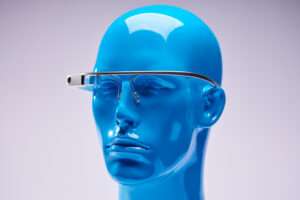What Failed Products Teach Us About Capitalism
Being able to take risks and having the freedom to try out wild ideas is the only process that leads to successful innovation.
HD DownloadEveryone knows that Thomas Edison found 2,000 ways not to make a lightbulb. James Dyson made 5,126 prototypes before hitting it big with his dual cyclone vacuum cleaner. And Apple nearly went bankrupt in the 1990s because the Newton PDA and the Macintosh LC were no match to Microsoft or IBM products at the time. The failure of a product is not something to shame or hide but to celebrate. Entrepreneurs must continue taking meaningful risks—that will sometimes end in failure—in order for society to both advance and solve some of the world's biggest problems. The beauty of capitalism is that it fosters experimentation through trial and error because, in many cases, it's impossible to predict consumers' desires.
Being able to take risks and having the freedom to try out wild ideas is the only process that leads to successful innovation. The Museum of Failure in Washington, D.C., highlights that essential phenomenon by displaying many commercial flops—some of which were before their time while others were just a blip in some companies' otherwise very successful product lines. Reason spoke with Johanna Guttmann, one of the organizers of the exhibit, about the importance of failure and how some industries, like tech, are better at learning from failure than other industries. Below are some of the most notable products they have on display:
1. Growing Up Skipper

Mattel debuted Skipper, Barbie's younger sister, in 1964. But in the 1970s, the company decided that it was time for Skipper to grow up. A new edition of Skipper came out that really gave you two dolls in one—a bargain! But the problem was that when you lifted Skipper's arm she developed breasts and grew taller. It turns out that young girls (and their parents) were not huge fans of having a doll that was both prepubescent and an adult. However, Skipper does make a very brief appearance in the Barbie movie in the treehouse she shares with Midge—the pregnant Barbie who was also an unsuccessful toy.
2. Soundburger

The Walkman revolutionized listening to music on the go in the 1980s. And in 1983, Audio Technica debuted the AT-727 Sound Burger, a portable turntable. You could listen to records anywhere, but unlike the Walkman, the Soundburger had to be lying flat to play, so you couldn't be on the move with it. Not to mention it was bulky and impossible to protect your exposed records. But the company persisted and now produces a portable Bluetooth-enabled turntable for the melophiles out there.
3. Hawaii (Hula) Chair
Listed on Time magazine's 2010 "50 Worst Inventions," the Hawaii chair (also known as the hula chair) was supposed to work your abs at work while you sat through your 9-to-5. The circular motion of the base of the chair was intended to "transport" you to a tranquil environment while keeping your back loose. But the sensation was much closer to sitting on a turbulent plane. Now more than ever there is certainly a push to get workers moving around during the workday, but a standing desk or even a walking pad are less distracting (and more practical) in the workplace.
4. Google Glass

Google launched smart glasses in 2013 that included a built-in camera, voice controls, and a revolutionary screen. Some tech enthusiasts were willing to spend $1,500 to test the product, but there were significant privacy concerns over what the product was tracking. However, is a new Google Glass in the works that utilizes augmented reality, so hopefully that product doesn't face a similar fate.
Photo Credits: Eden, Janine and Jim, CC BY 2.0, via Wikimedia Commons; Polygoon-Profilti (producent) / Nederlands Instituut voor Beeld en Geluid (beheerder), CC BY-SA 3.0 NL, via Wikimedia Commons; NotFromUtrecht, CC BY-SA 3.0, via Wikimedia Commons; Appraiser at en.wikipedia, CC BY-SA 3.0, via Wikimedia Commons; mageBROKER/David Talukdar/Newscom; EyePress/Newscom; Bryan Olin Dozier/ZUMAPRESS/Newscom; Thomas Trutschel/picture alliance / photothek/Newscom; Jaap Arriens/Sipa USA/Newscom; Tom Williams/CQ Roll Call/Newscom; Bill Ingalls - NASA via CNP/Newscom; JOE MARINO/UPI/Newscom; Imagine China/Newscom; Prelinger Archive; Envato Elements.Music Credits: "Dove Laria Ce," by Silvia Rita via Artlist, "New Car," by Rex Banner via Artlist, "Blanket," by Van Stee via Artlist, "Busy Day Ahead," by MooveKa via Artlist, "Presto," by Adrián Berenguer via Artlist, "Goals," by Rex Banner via Artlist.
- Video Editor: Regan Taylor
- Audio Production: Ian Keyser


Show Comments (13)